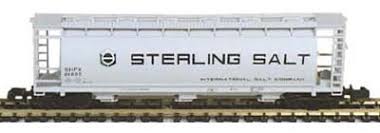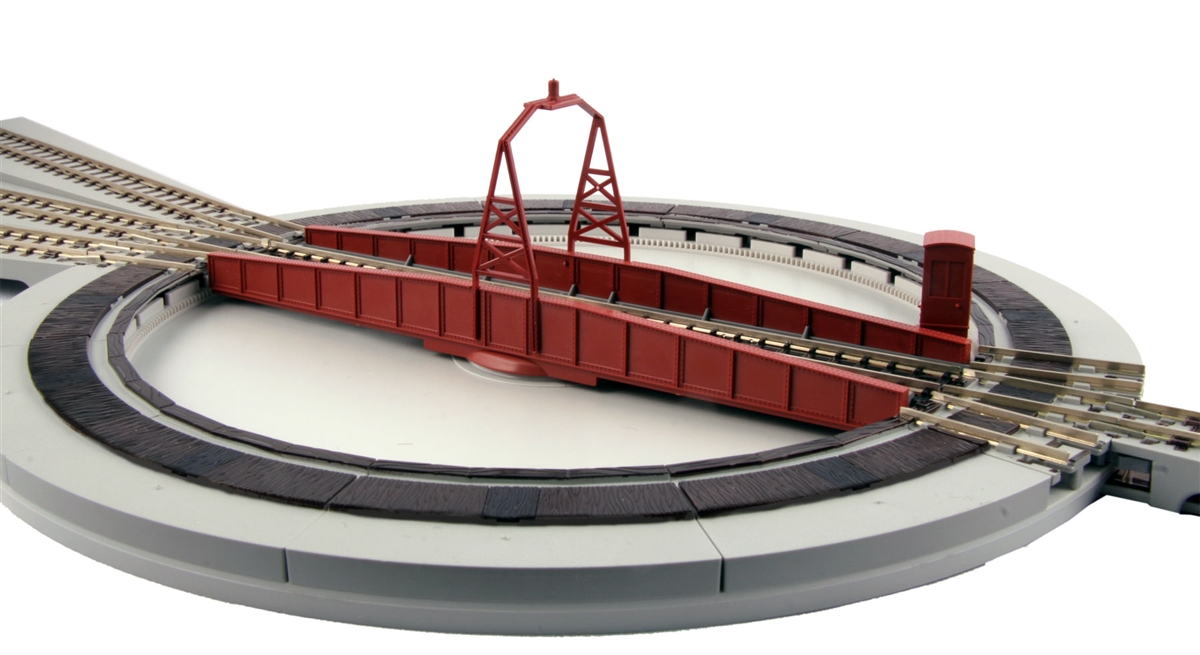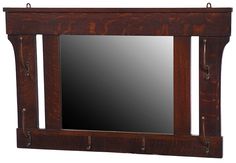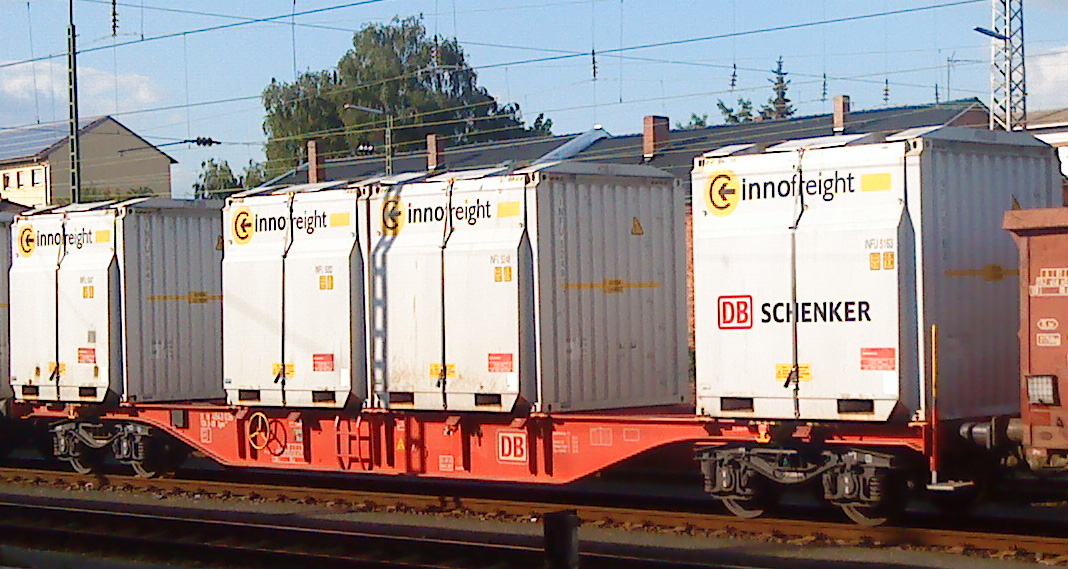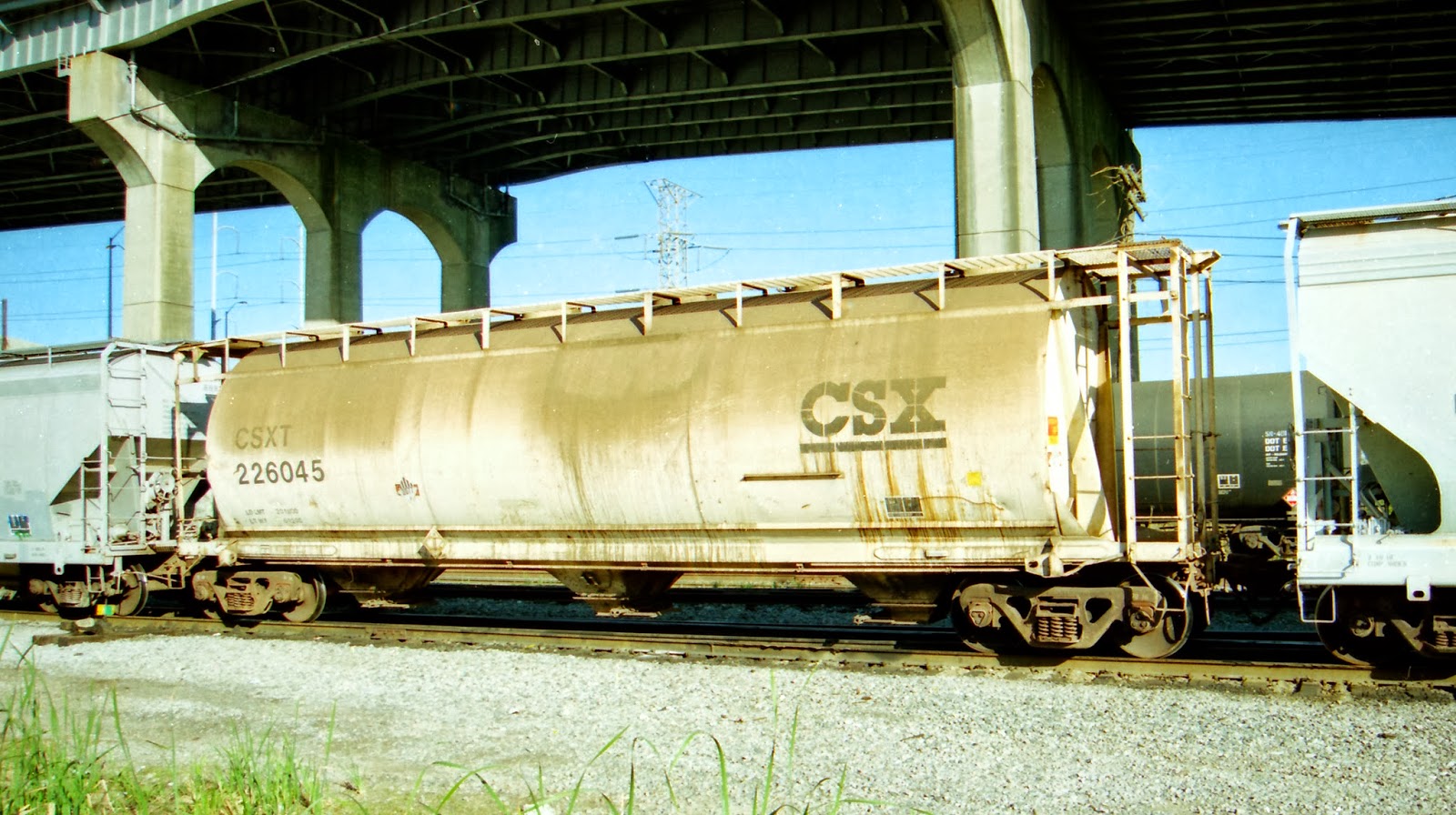Model Information: This model was developed by Delaware Valley Freight Car Corporation. The tooling was purchased by Bowser in 1998 and has been re-released several times since it was acquired. The body style has also been sold by Eastern Seaboard Models under the ESM branding. The model is available in both 3-Bay and 6-Bay variations.
Prototype History: ACF introduced their roundish cylindrical hoppers in the early 1960s. The cars differed greatly from the ribbed sided hoppers of the era. They have been made in 3-bay and 6-bay variations. These cylindrical hoppers were superseded on ACF’s production line by the Centerflow in 1964, a revolutionary design that influenced later covered hopper types. In the late 60s or early 70s Canada came out with 4-bay covered hoppers that appear to be derived from ACF’s pre-Centerflow cylindrical hoppers. These cars were used by CN, CP and various smaller Canadian shippers. There is some question as to why the Canadian builder based their design off the older cylindrical and not ACF’s newer Centerflow. It was likely a patent issue and copying it could have triggered legal action against the Canadian builders. There are also certain structural design differences between the cylindrical and centerflow cars and perhaps the decision to copy the cylindrical was based on the greater volume capacity of the cylindrical design.
Road Name History: 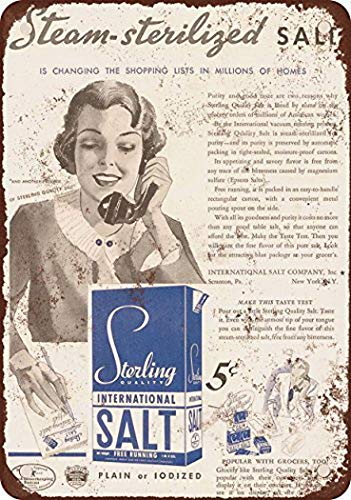 The International Salt Company incorporated on August 22, 1901, and in 1902, the company purchased the stock and assets of the National Salt Company, which had failed. By 1934, International Salt was a holding company for six subsidiaries: Avery Salt Company (West Virginia), Detroit Rock Salt Company (Michigan), Eastern Salt Company (Massachusetts), Independent Salt Company (New York), International Salt Company, Inc. (New York), and Retsof Mining Company (New York). All of the subsidiaries operated rock salt mines and evaporated salt plants and distributed salt. In 1940, the International Salt Company decided to sell four of its subsidiaries--Avery Salt Company, Detroit Rock Salt Company, International Salt Company, Inc., and Retsof Mining Company.
The International Salt Company incorporated on August 22, 1901, and in 1902, the company purchased the stock and assets of the National Salt Company, which had failed. By 1934, International Salt was a holding company for six subsidiaries: Avery Salt Company (West Virginia), Detroit Rock Salt Company (Michigan), Eastern Salt Company (Massachusetts), Independent Salt Company (New York), International Salt Company, Inc. (New York), and Retsof Mining Company (New York). All of the subsidiaries operated rock salt mines and evaporated salt plants and distributed salt. In 1940, the International Salt Company decided to sell four of its subsidiaries--Avery Salt Company, Detroit Rock Salt Company, International Salt Company, Inc., and Retsof Mining Company.
John M. Avery discovered rock salt at Petite Anse, Louisiana in 1862. Petite Anse Island was renamed Avery Island in the late 19th century. Ownership and mining of salt at Petite Anse involved numerous parties until 1886, when New Iberia Salt Company took over operations. In 1896, the Avery family began operating the mine, and they founded the Avery Rock Salt Mining Company. In 1899, the International Salt Company leased the mine.
The Detroit Salt and Manufacturing Company was founded in 1906. The company quickly went bankrupt during construction of a shaft and was acquired in 1910 by the Watkins Salt Company, which incorporated the new organization under the name Detroit Rock Salt Company. The company experienced success and the International Salt Company purchased the mine circa 1914. In 1983, International Salt closed the mine's operations and in 1985, Crystal Mines, Inc., purchased the mine as a potential storage site.
In 1885 the Empire Salt Company of New York was renamed the Retsof Mine Company, and the Village of Retsof was founded near the mine shaft. During the next 110 years, the mine grew to become the largest salt-producing mine in the United States and the second largest in the world. Before the initial collapse in March 1994, the mine encompassed an underground area of more than 6,000 acres, and the mine footprint (outer edge of mined area) extended over an area of nearly ten square miles. At the time of the collapse, the Retsof Mine was owned by Akzo-Nobel Salt Incorporated (ANSI) and, during the winter of 1993–1994 operated at full capacity to meet demands for road salt throughout the northeastern United States. The Retsof Mine ceased operations on September 2, 1995, and by December, twenty-one months after the initial collapse, the mine was completely flooded.
Sterling Salt was one of trademarks of The International Salt Company.

John M. Avery discovered rock salt at Petite Anse, Louisiana in 1862. Petite Anse Island was renamed Avery Island in the late 19th century. Ownership and mining of salt at Petite Anse involved numerous parties until 1886, when New Iberia Salt Company took over operations. In 1896, the Avery family began operating the mine, and they founded the Avery Rock Salt Mining Company. In 1899, the International Salt Company leased the mine.
The Detroit Salt and Manufacturing Company was founded in 1906. The company quickly went bankrupt during construction of a shaft and was acquired in 1910 by the Watkins Salt Company, which incorporated the new organization under the name Detroit Rock Salt Company. The company experienced success and the International Salt Company purchased the mine circa 1914. In 1983, International Salt closed the mine's operations and in 1985, Crystal Mines, Inc., purchased the mine as a potential storage site.
In 1885 the Empire Salt Company of New York was renamed the Retsof Mine Company, and the Village of Retsof was founded near the mine shaft. During the next 110 years, the mine grew to become the largest salt-producing mine in the United States and the second largest in the world. Before the initial collapse in March 1994, the mine encompassed an underground area of more than 6,000 acres, and the mine footprint (outer edge of mined area) extended over an area of nearly ten square miles. At the time of the collapse, the Retsof Mine was owned by Akzo-Nobel Salt Incorporated (ANSI) and, during the winter of 1993–1994 operated at full capacity to meet demands for road salt throughout the northeastern United States. The Retsof Mine ceased operations on September 2, 1995, and by December, twenty-one months after the initial collapse, the mine was completely flooded.
Sterling Salt was one of trademarks of The International Salt Company.
Brand/Importer Information: On May 1, 1961, Bowser was purchased by Lewis and Shirlee English and moved from Redlands, CA to their basement in Muncy, PA. The original Bowser Manufacturing Co first advertised in the model railroad magazines in November 1948. At that time, the company had only one (HO Scale) engine, the Mountain, which had a cast brass boiler that is no longer available. It was sometime later that Bowser (Redlands) developed the NYC K-11 and the UP Challenger. The molds were made by K. Wenzlaff who introduced himself at the MRIA Show in Pasadena, CA in 1985 These two locomotives are still current production.
Bowser entered into N Scale in 1998 with their acquisition of the Delaware Valley Car Company, a manufacturer of N scale freight cars.
Bowser entered into N Scale in 1998 with their acquisition of the Delaware Valley Car Company, a manufacturer of N scale freight cars.
Item created by: Lethe on 2015-10-02 10:12:21. Last edited by CNW400 on 2020-05-25 14:44:09
If you see errors or missing data in this entry, please feel free to log in and edit it. Anyone with a Gmail account can log in instantly.
If you see errors or missing data in this entry, please feel free to log in and edit it. Anyone with a Gmail account can log in instantly.


